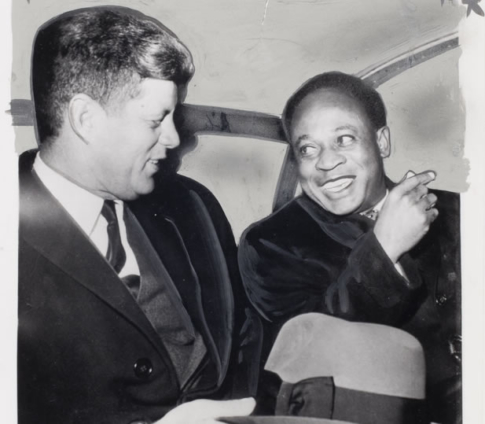The Office of the President, symbolically represented by the Asεsεgua, or throne, is the most powerful instrument of governance in our democratic society.
The grip of poverty, ignorance and disease can only be loosened and eventually eradicated by the single purpose for which the Asεsεgua must be used: quality public administration.
An emblem of Ghanaian sovereignty, the Asεsεgua represents a connexion between the sacrifice of our forbearers and the citizenry.
The esoteric rite of the President’s installation expresses reverence for God and acknowledges dependence on our ancestors, without whose efforts, an independent Republic would have remained a figment of our imagination.
The birth of a free Republic was a monumental manifestation of Ghanaian advancement. The Asεsεgua was exalted to an eminent degree of autonomy after the plebiscite, in April 1960, paved way for the departure of erstwhile colonial Governor-General, William Hare, the 5th Earl of Listowel.
The senior-most public servant, propelled to the Asεsεgua, by the hand of the citizenry, appoints and advances fellow citizens –– throne-carriers –– to participate in the same noble profession and enhance the welfare of the Republic.
The Asεsεgua was first occupied by Osagyefo Kwame Nkrumah, the grand architect of the first Republic, on 1st July 1960, when his tenure began the as President of Ghana.
Nkrumah’s legacy continues to transcend the conscience of nation builders; it serves as a reminder that statecraft is a worthwhile pursuit that elevates a well-intentioned politician, by virtue of service, to their higher-self.
On the 2 July 1960, the 1st Parliament of the Republic assembled to elect, by Presidential proclamation, a Speaker and Deputy Speaker.
Later that day, Osagyefo assumed the office of Commander-In-Chief of the armed forces. On 4 July, in a classic demonstration of aesthetic African pomp and pageantry, Osagyefo was welcomed by traditional talking drums and a 21-gun salute by the Ghana Reconnaissance Squadron, after which he inspected the Third Battalion of the Ghana Regiment.
He was escorted to the House by eight linguists drawn from the various provinces, a State Sword Bearer and the Mace Bearer. Horns sounded from the Juaben State Nhatera before he assumed full authority of the Asεsεgua.
As the sun set on Accra, Osagyefo set ablaze the flame of African freedom and proclaimed the Republic of Ghana.
The Asεsεgua regulates the President’s prescribed modes of action, amidst a multiplicity of options, by the laws that govern earth and the omnipresence of a Supreme Being, which serves as a reminder to the operating elements of the throne that account will be given for service to fellow citizens through this transitory sojourn of life.
The might of the Afesa-nta (State Sword) must purposefully foster a cultural, political and economic interdependence amongst the various Provinces, through equity in the distribution of resources across the Republic — each Province serving as a unique Pillar of the Free Republic.
As the axis of political relations, it must remain the principal unifying element of all the Provinces that constitute the Republic.
***
The author, Vincent Djokoto, is a Business Executive and Columnist Twitter/Instagram: @VLKDjokoto
Latest Stories
-
Tanzania, Rwanda, Zimbabwe join African recall of J&J cough syrup
56 seconds -
IMF doesn’t buy from our market; their positive assessment of Ghana’s economy needless – Adongo
11 mins -
“Give us back our money” – Aggrieved customers of Gold Coast Fund give gov’t 3-month ultimatum
13 mins -
Manhunt as ‘dangerous’ suspects escape Namibia cell
16 mins -
Luis Enrique confident of PSG comeback against Barcelona
23 mins -
KNUST launches GRASAG Research Fund to support problem-solving initiatives
38 mins -
Rust armourer sentenced to 18 months for Halyna Hutchins’ death
47 mins -
You’ve no power to regulate transport fares – COPEC to Transport Ministry
51 mins -
Encourage decentralisation to accelerate development – Okyenhene
1 hour -
Today’s front pages: Tuesday, April 16, 2024
1 hour -
Mahama promises to decentralise SHS food supply
2 hours -
Copenhagen’s historic stock exchange in flames
2 hours -
Sisay Lemma of Ethiopia and Kenya’s Hellen Obiri win Boston Marathon
3 hours -
GPL 2023/24: Accra Lions move to 5th with win over Bibiani GoldStars
4 hours -
LPG Marketing Companies Association expresses opposition to new tax on LPG
4 hours

